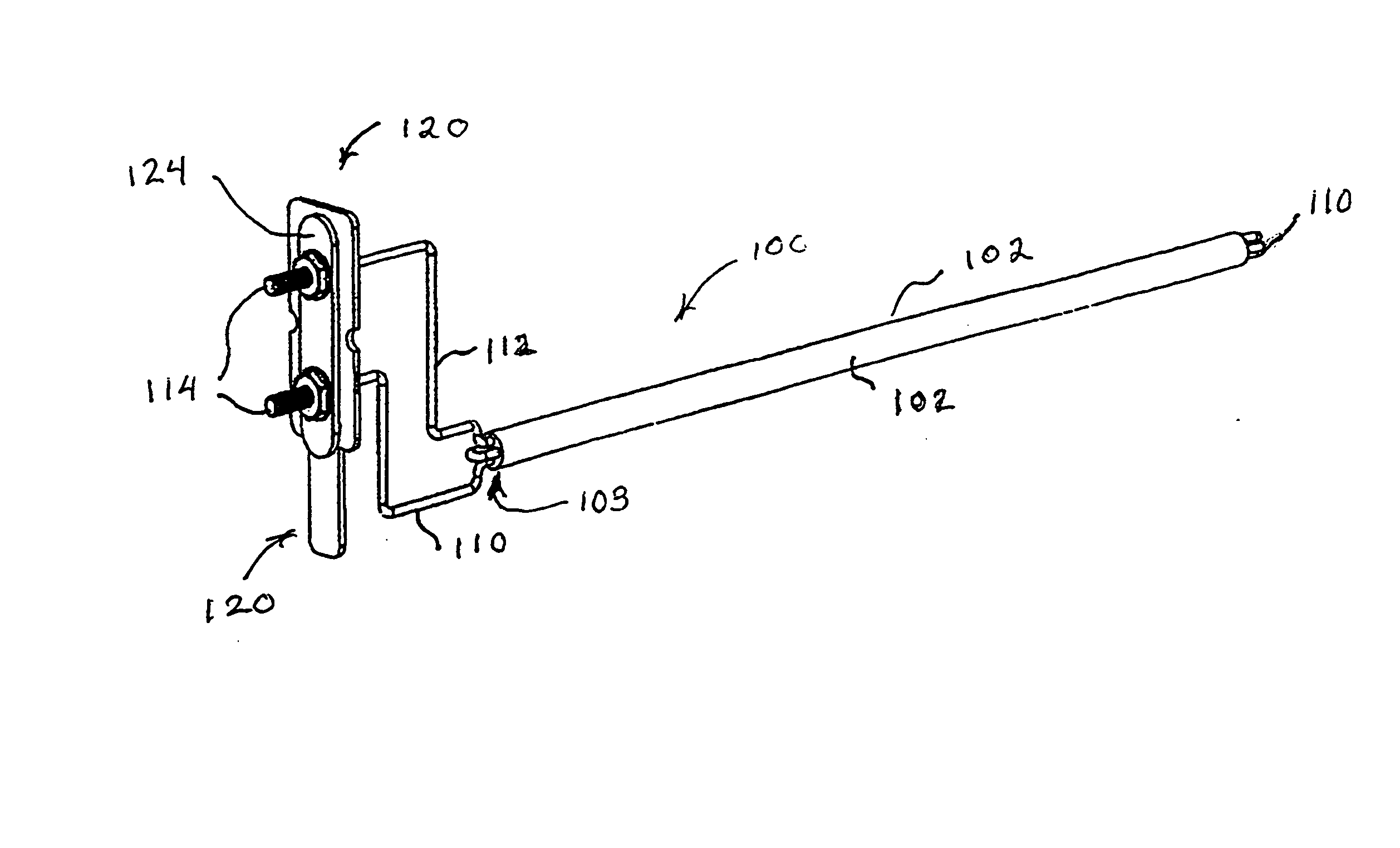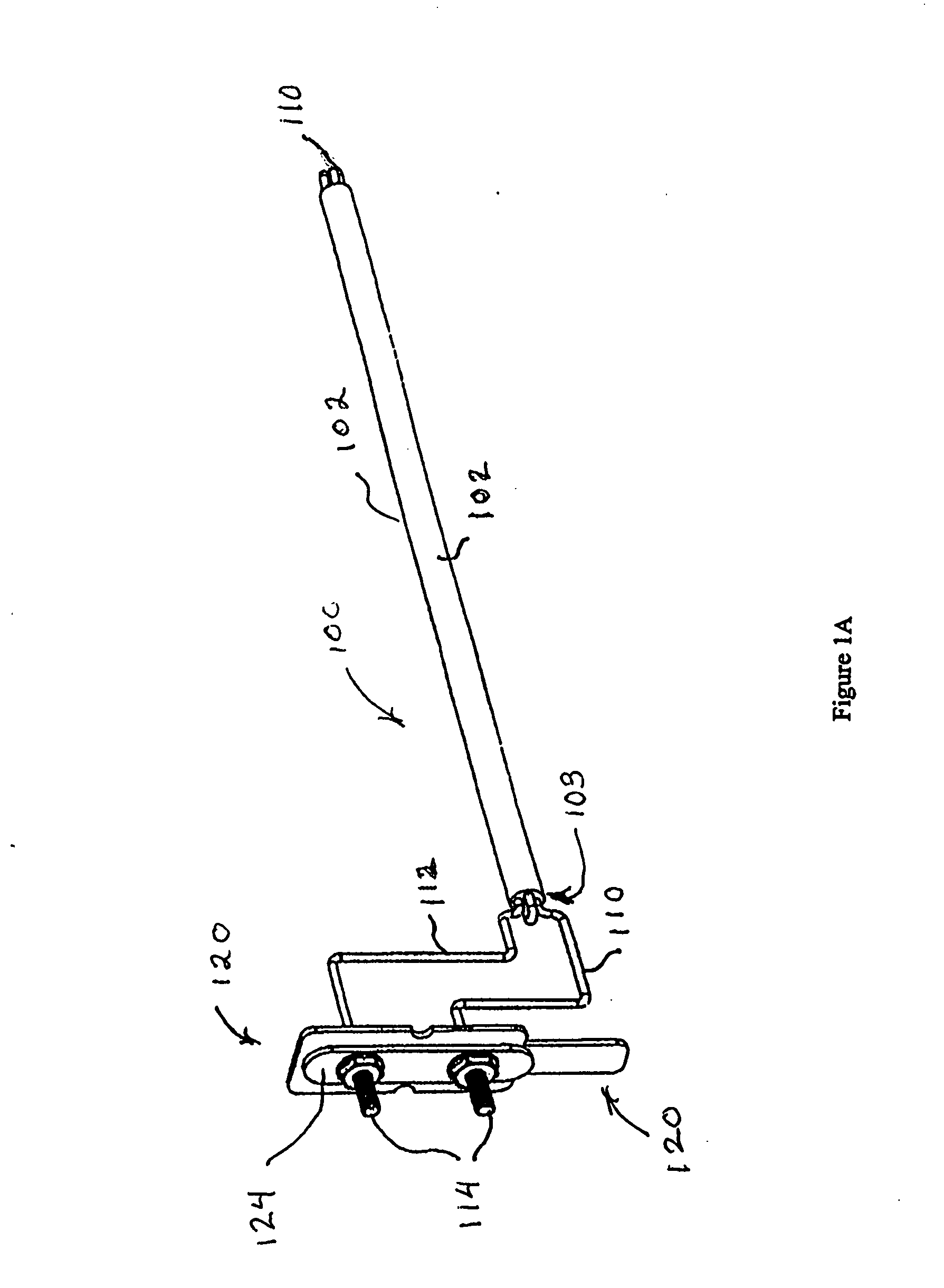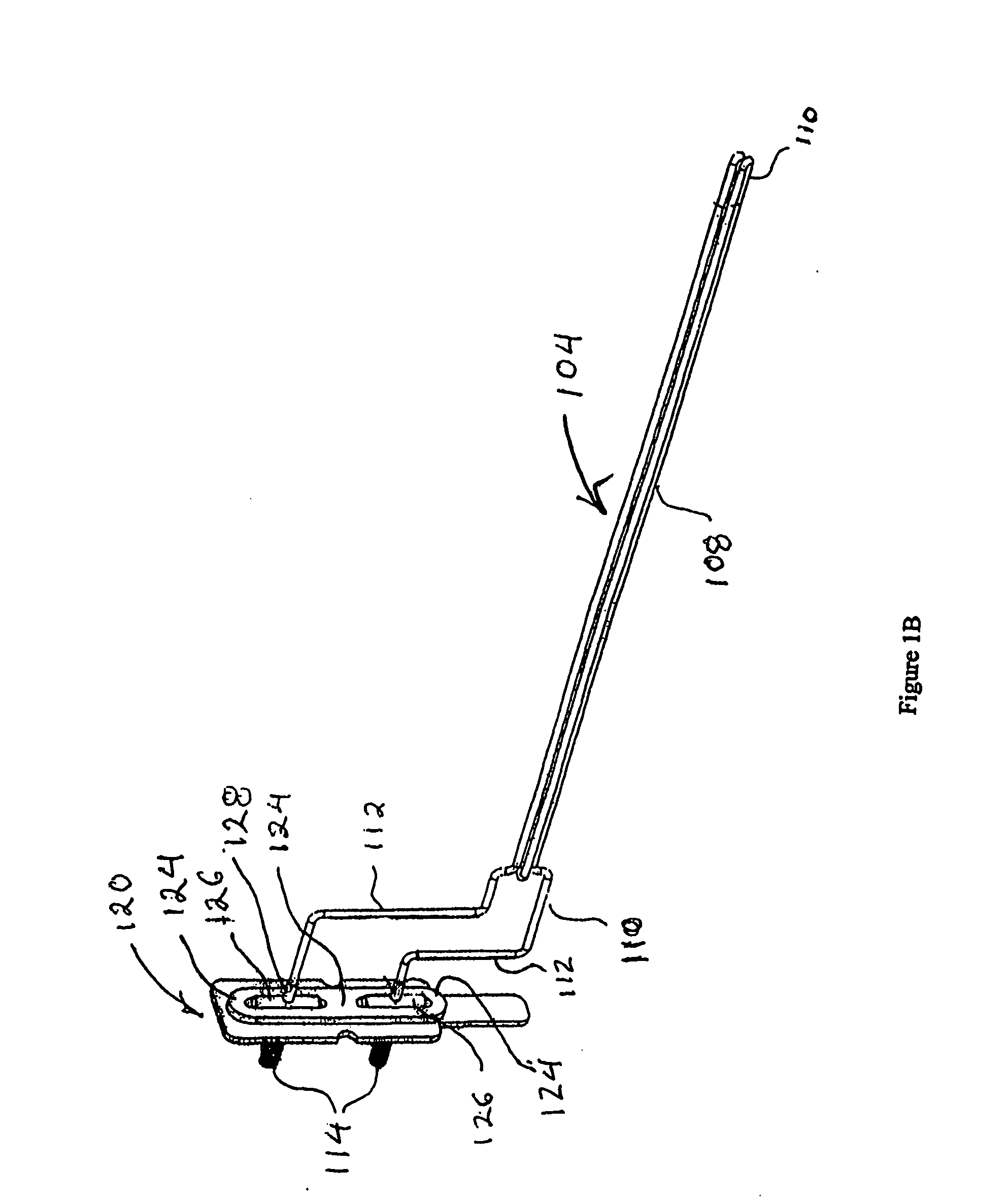High temperature heating element for preventing contamination of a work piece
a high temperature heating element and work piece technology, applied in the field of high temperature heating, can solve the problems of affecting the quality of workpieces, the heating element itself becoming a source of contamination, and the inability to withstand oxidation or other chemical conditions, so as to achieve accurate determination and closely controlled, the effect of rapid thermal response and faster processing
- Summary
- Abstract
- Description
- Claims
- Application Information
AI Technical Summary
Benefits of technology
Problems solved by technology
Method used
Image
Examples
Embodiment Construction
[0034] Overview
[0035] Referring to FIGS. 1A, and 1B, a heating element assembly 100 in accordance with an aspect of the invention comprises an aluminum oxide ceramic sleeve or sheath 102. Through holes or bores 103 are provided along the longitudinal axis of the ceramic sleeve 102 for protectively enclosing and supporting a heating element wire 104. The heating element wire 104 comprises a main heating portion 108 consisting of an iron chromium aluminum (Fe Cr Al) resistance heating alloy, such as KANTHAL®, a transition portion 110 comprising preferably nichrome, and a terminal portion or end 112 comprising nickel for connection to a source of electric current at power terminals 114. The KANTHAL®, or other resistive heating wire comprises main heating portion 108 having a first diameter for producing a maximum amount of heat within the ceramic sleeve or sheath 102. Optionally, the KANTHAL®, or other resistive heating wire does not need to be a constant diameter, but also may compri...
PUM
| Property | Measurement | Unit |
|---|---|---|
| temperatures | aaaaa | aaaaa |
| temperatures | aaaaa | aaaaa |
| temperature | aaaaa | aaaaa |
Abstract
Description
Claims
Application Information
 Login to View More
Login to View More - R&D
- Intellectual Property
- Life Sciences
- Materials
- Tech Scout
- Unparalleled Data Quality
- Higher Quality Content
- 60% Fewer Hallucinations
Browse by: Latest US Patents, China's latest patents, Technical Efficacy Thesaurus, Application Domain, Technology Topic, Popular Technical Reports.
© 2025 PatSnap. All rights reserved.Legal|Privacy policy|Modern Slavery Act Transparency Statement|Sitemap|About US| Contact US: help@patsnap.com



